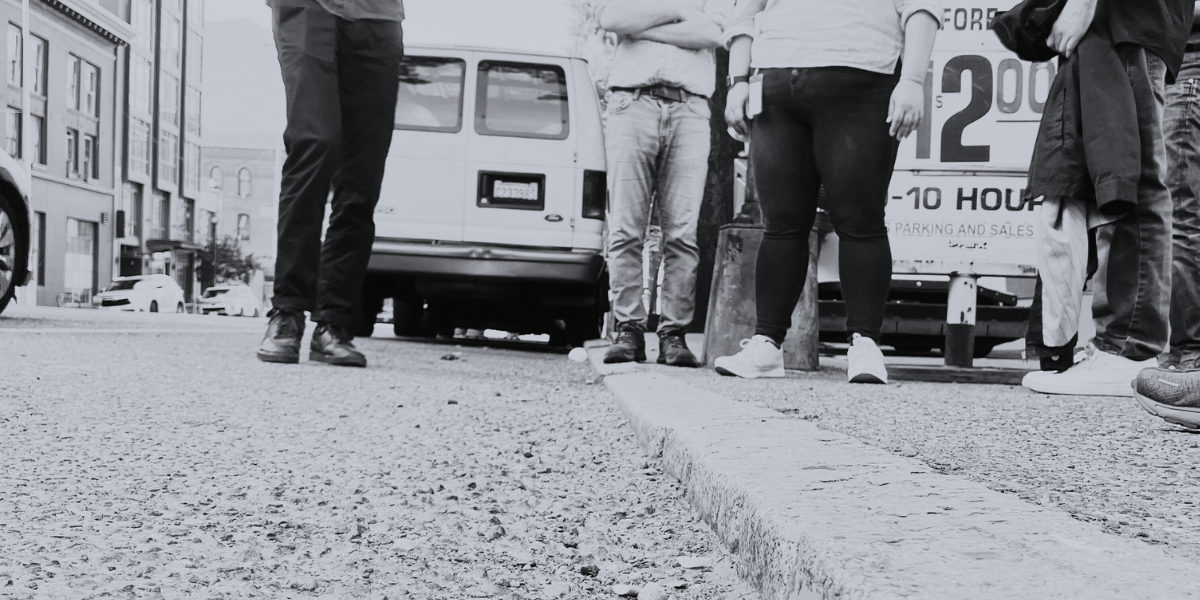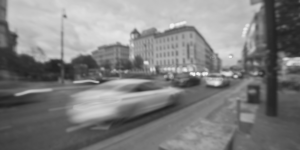The curb is a vast place. A single city can manage thousands of miles of curb space, with accompanying parking, loading and other regulations for every corresponding inch. Yet curb activity data, from parking rules to actual data about historical and real-time curb use, is still largely a mystery to the cities that govern and manage curb space.
The OMF’s SMART Curb Collaborative is a group of ten cities that are all piloting curb digitization projects as part of the USDOT SMART Grant. While each pilot is different, every project shares the goal of translating the curb and all its chaos into discernable, valuable, and actionable data about how the curb is used.
The collaborative met in Seattle last month to share updates about their curb digitization projects, connect with each other about shared problems, and learn more about the ways technology can be used to better understand and manage the curb. Some key themes emerged from this time together.
CURBS ARE COMMUNITY RELATIONSHIPS
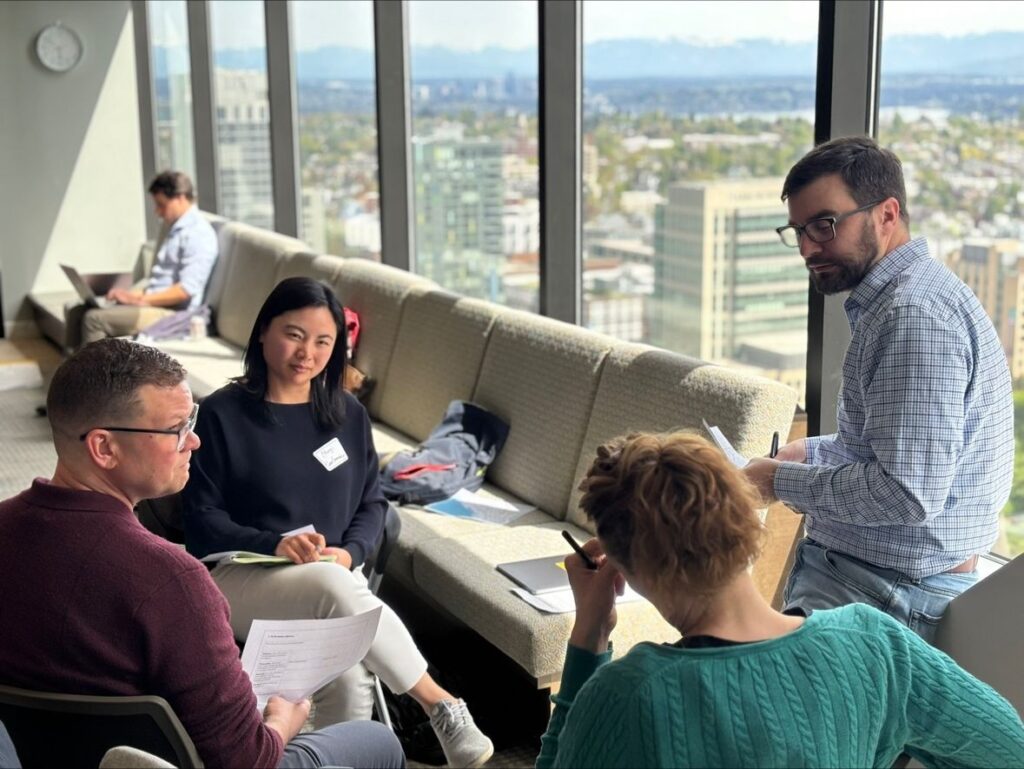
Collaborative members discussed how they plan to measure and evaluate their pilot projects while in Seattle.
Parking regulations are only a tiny reality of what happens at a curb. To get the full story of the life of a curb you’d need to talk with the shopkeeper who gets crates of oranges delivered on Monday morning, the postal worker who has walked the same route for 25 years, and at least a few different delivery companies and nearby residents.
Digitizing a curb is as much about the relationships and communities as it is about installing new technology. Many of the SMART Curb Collaborative projects are creating community engagement plans to gain a better understanding about their pilot areas through stronger community relationships.
THE CURB IS CHANGING QUICKLY — AND CITIES NEED TO ADAPT
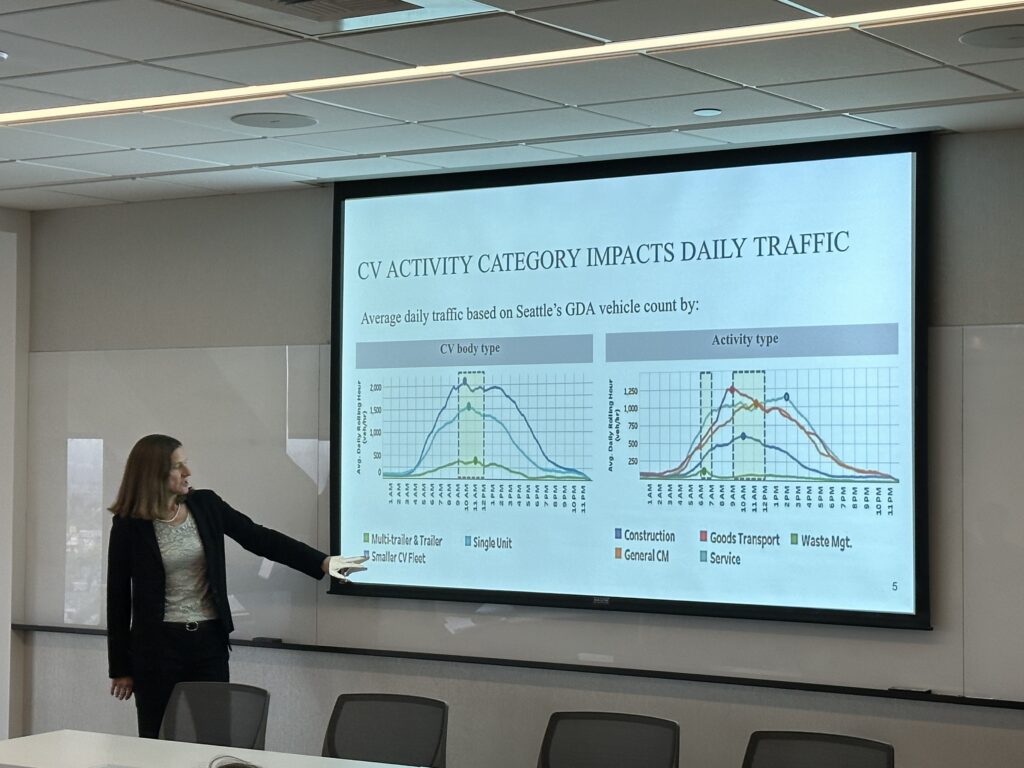
Dr. Anne Goodchild presents research findings from Urban Freight Lab on recent pilot projects.
The COVID-19 pandemic fundamentally altered activity at the curb. SMART Curb Collaborative partners from the Urban Freight Lab at the University of Washington shared insights with the Collaborative about their research on curb use, noting the recent and dramatic shift to home delivery since 2020. Curb space is more scarce and chaotic than it’s ever been, and cities recognize the need to adapt more quickly to the changing demands of the curb.
SHARED LANGUAGE AND STANDARDS ARE KEY
No two cities manage their curbs the same way. Between differing county, state and city regulations alone, the variations between individual cities and how they manage and enforce their curb space is astounding. Yet cities need to be able to learn and adapt policies and practices from one another, especially with new technology. During our time in Seattle, the Collaborative members discussed the different ways they plan to evaluate and measure their projects, noting both the variety in these evaluation criteria and the potential need for shared methods of evaluation between the pilot cities.
This need for a shared language is directly related to how and why the Open Mobility Foundation’s Curb Data Specification (CDS) was created in the first place. The Curb Data Specification is a tool that each of the SMART Curb Collaborative cities are utilizing in their pilot projects. CDS is a shared, common language that cities can use to understand, measure and communicate information about the curb in a standard, readable format.
Curb activity is always going to vary widely between places. Rather than only using one type of technology service or mandating top-down regulatory approaches, the OMF’s Curb Data Specification offers a shared language to communicate the incredible variety of activity found at the curb.
PILOTS ARE BETTER WITH PEERS
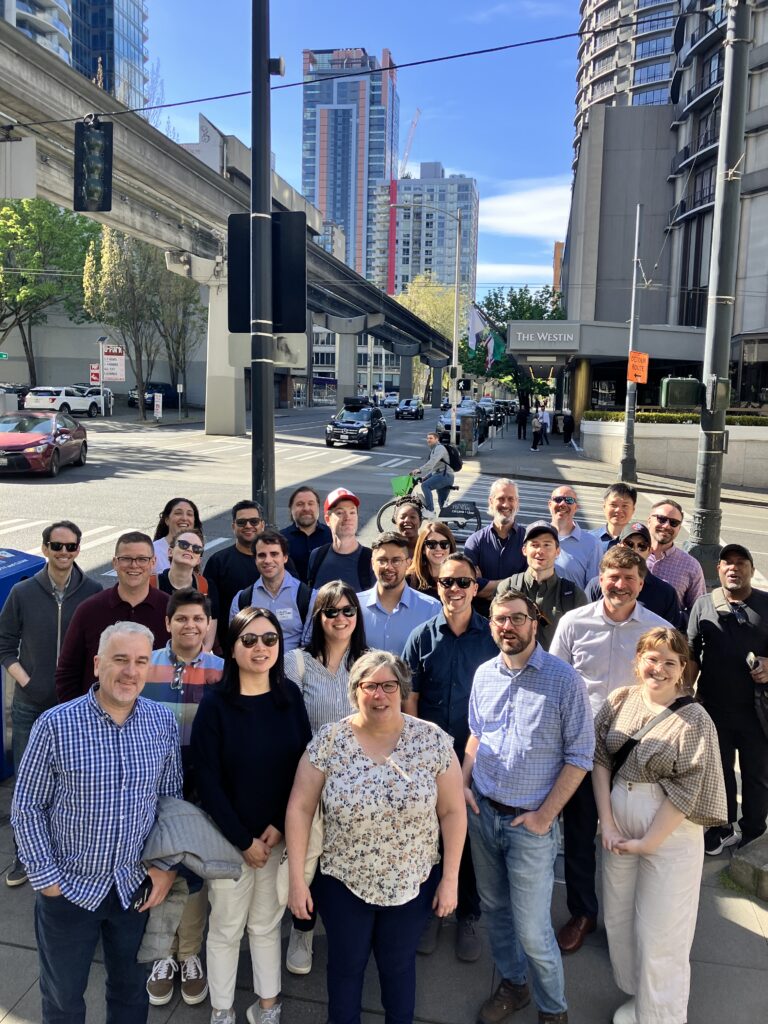
The Seattle Department of Transportation led their Curb Collaborative peers on a city walk, sharing highlights of their recent city projects and pilots (and a good deal of local history and lore, too!)
All ten of the Collaborative cities are advancing projects that have never been done before, using technology and processes that largely didn’t exist even a few years ago. It’s hard to overstate the difficulty in testing and iterating new technologies from within the confines of city government. These cities are the “early adopters” and by breaking new ground are paving the way for the cities that follow. The Collaborative will share and amplify their experience and learnings to make curb digitization easier for those who come next.
In-person time is invaluable, not just for shared learnings but also for shared experiences and understanding among peers. The Collaborative will have more opportunity for connection soon: the Collaborative will again get together in Cambridge in July for the SMART Summit hosted by the US Department of Transportation, and we’ll gather again in September of 2024 as a Collaborative.
Learn more about the OMF SMART Curb Collaborative by visiting our site and following us on LinkedIn.

